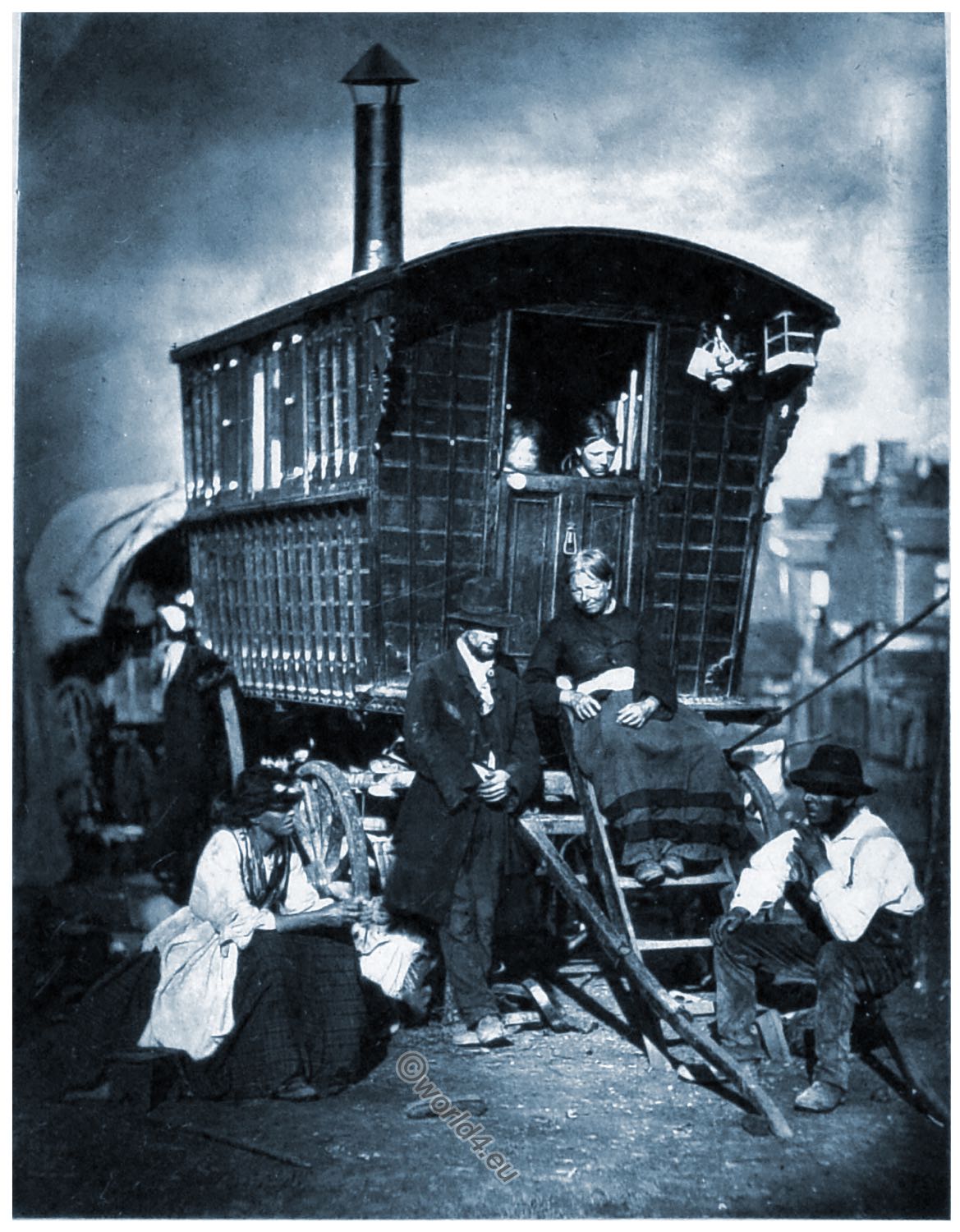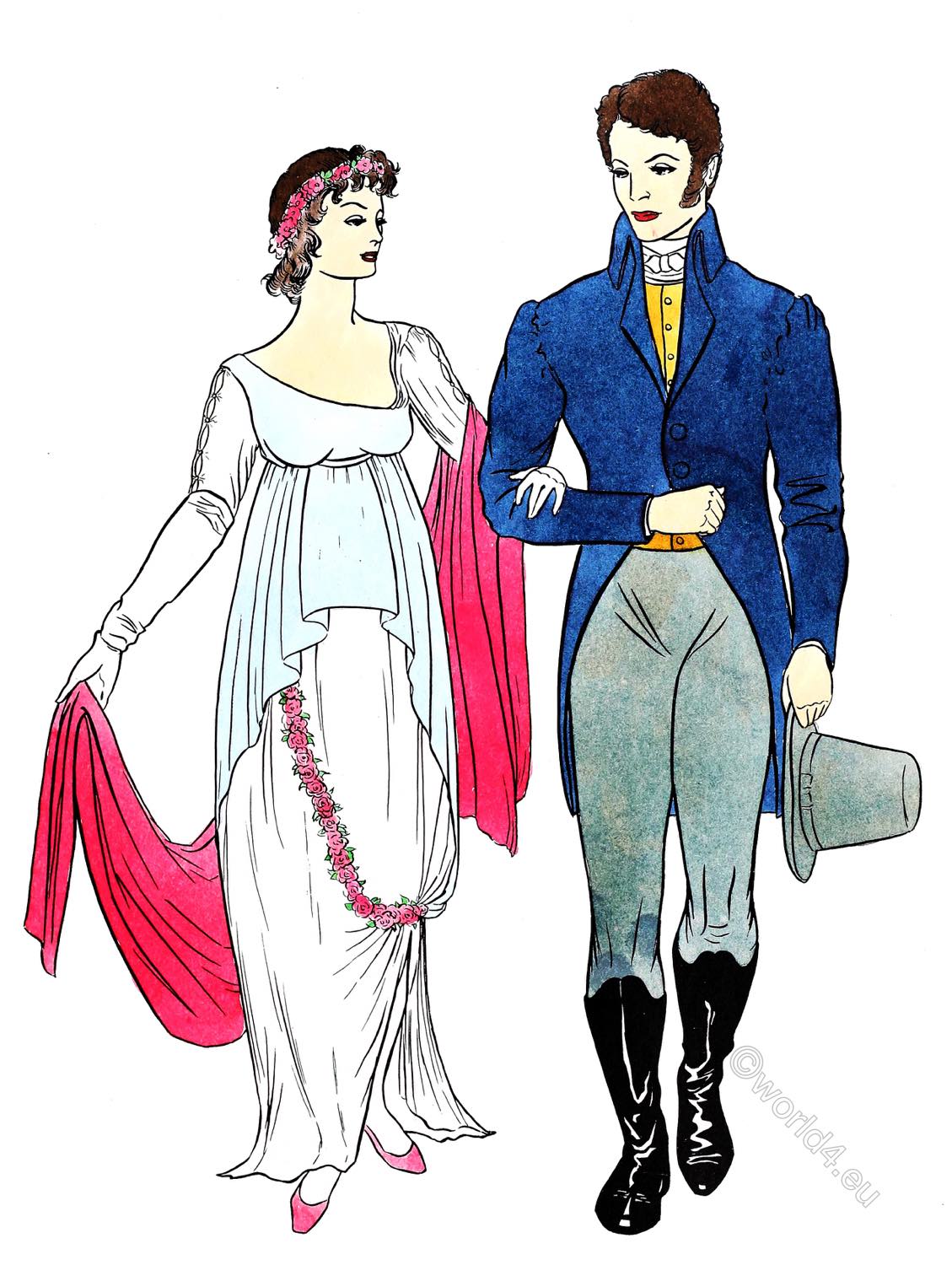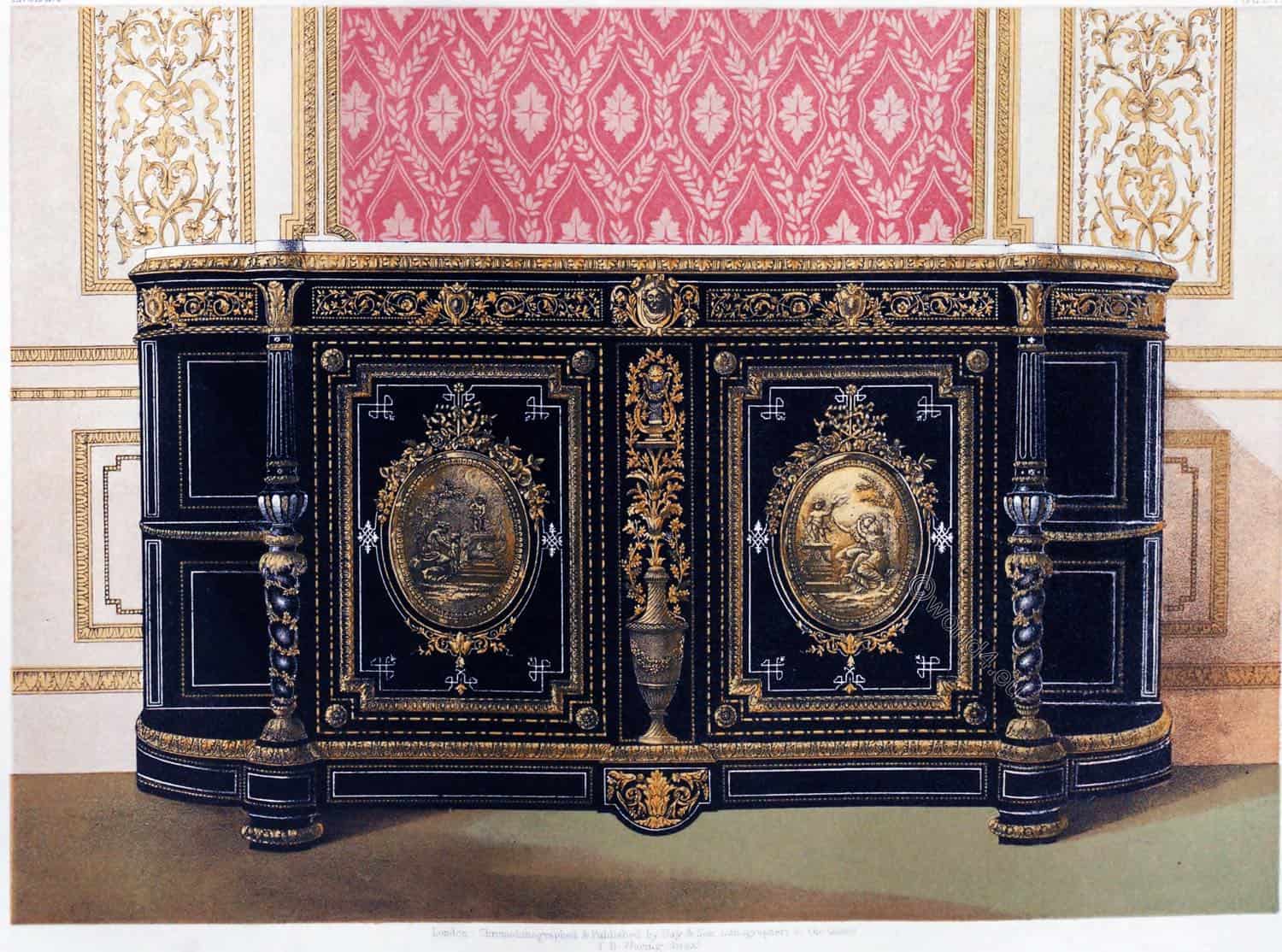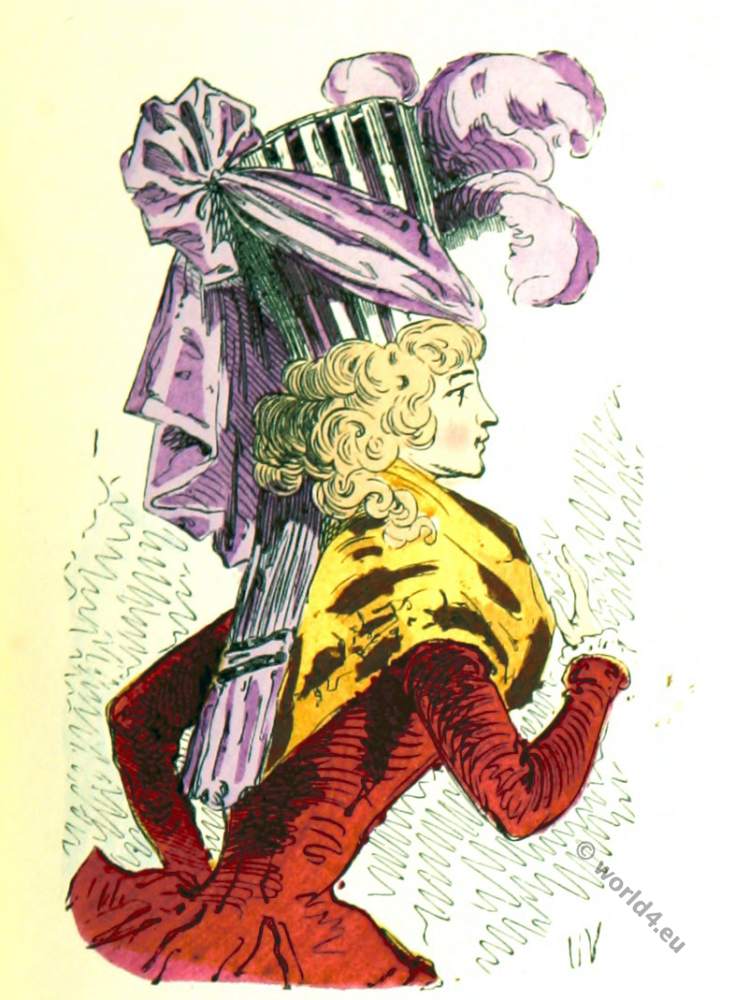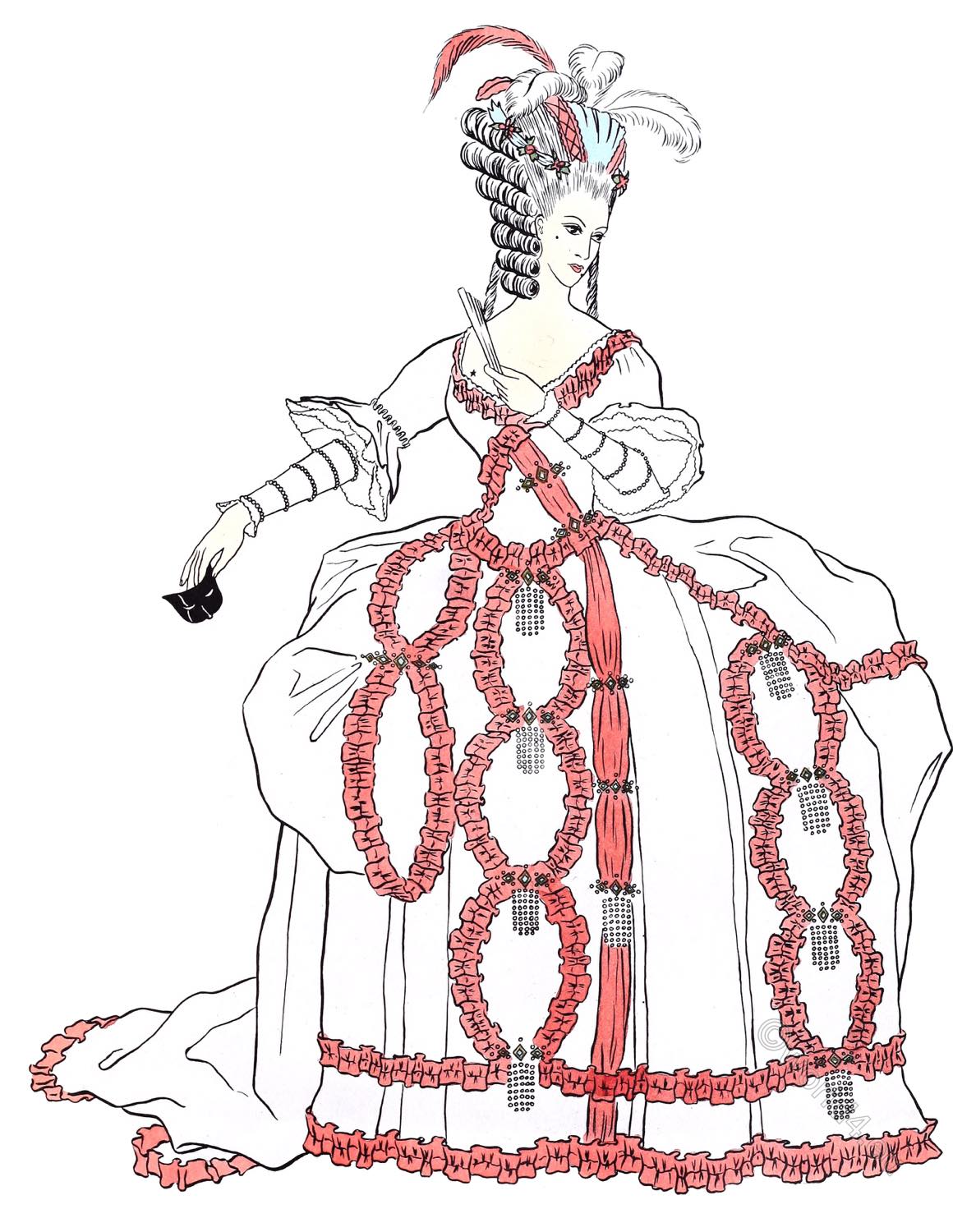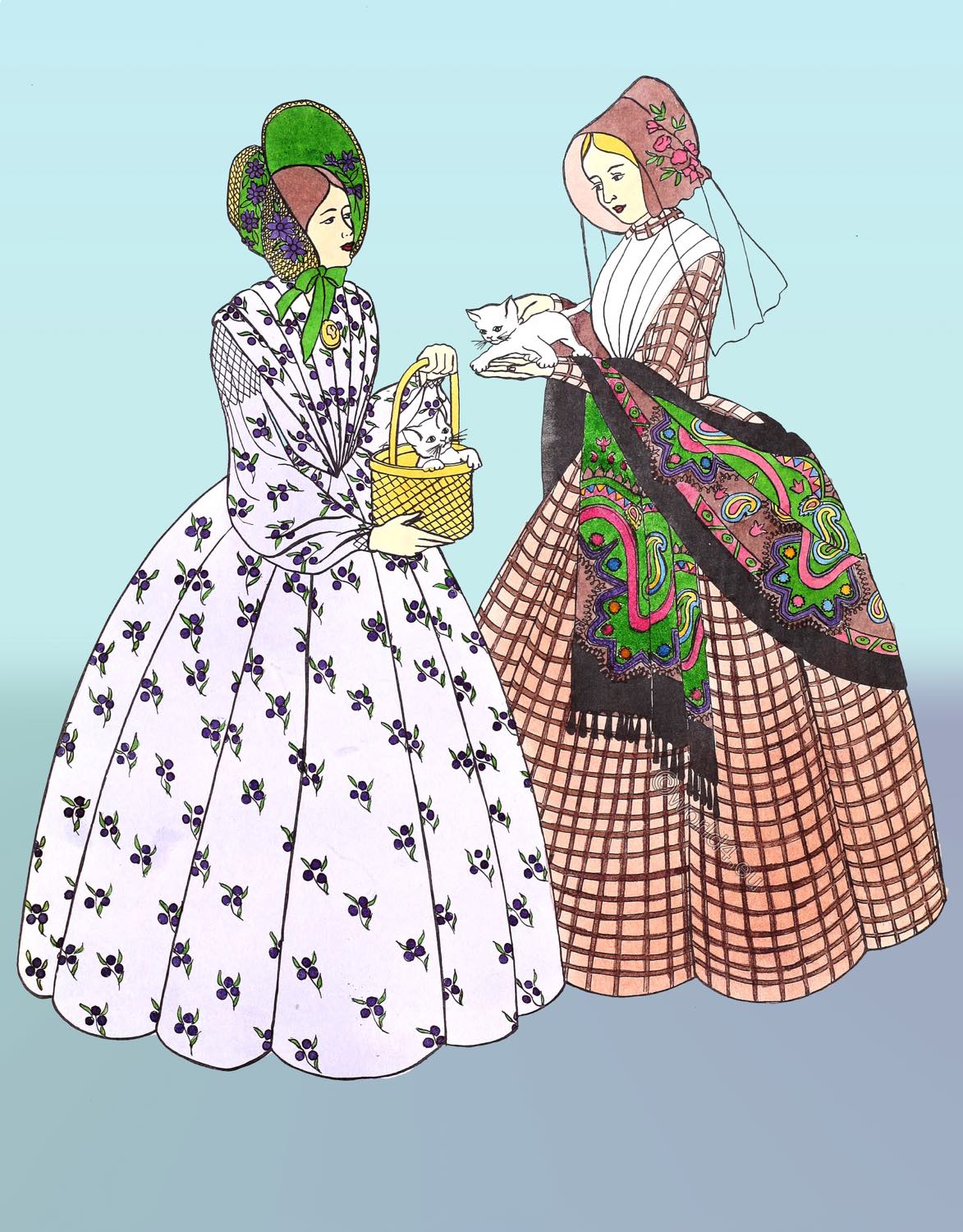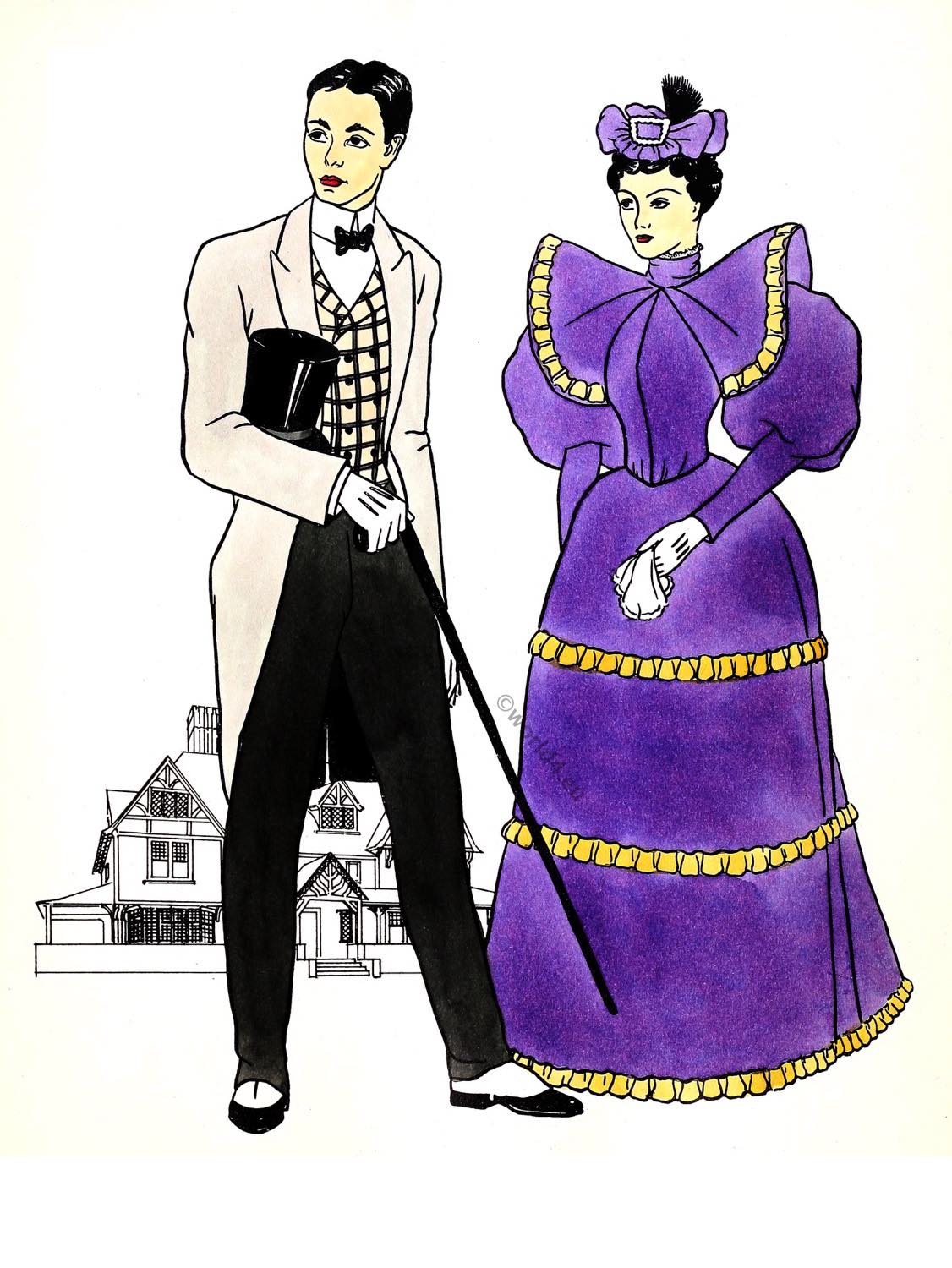
GAY NINETIES.
PLATE Nr. 109
1890-1900.
This couple of the 1890s might be compared to the figures in Plate 103. They are both dressed in afternoon formal dress; both are typical examples of their era. Again it is brought to our attention that, whereas wonen’s costume has gone through several changes, men’s dress has remained somewhat the same.
The young man pictured here wears a single-breasted frock coat. He has left it unbuttoned with the fullness of the skirt in the back. If it ware buttoned it would hang down all around, with no opening in front just as the double-breasted model in Plate 103. When buttoned tho coat does not come up as high as it did in the Late Victorian era. The lapels are longer, and the opening at the breast is greater.
The shirt has a starched front and probably fastens up the back. The collar is the characteristic high one of the nineties. This particular one is of the turned-down variety worn with a small black bow-tie. The double-breasted plaid waistcoat has a slight lapel and flat collar. Its gay decoration is an indication that even as late as the nineties men employed color and gayety in their ensemble. The trousers are the same as those seen in preceding plates. These fit the legs somewhat closely and hang well down over the instep.
Over his shoes he wears spats made exactly like modern spats. His hat is a high silk topper. He carries a walking stick with a crooked handle.
The woman’s dress shown here, as compared with that in Plate 103, illustrates the decided change that took place in feminine costume. It shows the new silhouette — the enlarged sleeves and the reduced skirt of the nineties.
The sleeves, which had been so neat and form fitting heretofore, now have huge puffs that must be supported with inner linings and specially constructed straps and pads. The lower half of the sleeve is cut and fitted to the arm so that it tapers smoothly down to the wrist. Over the distentions are placed trimmings of all kinds. Some of the most popular are the stiffened capes shown here. These extend down the front and back of the bodice to a point midway between the shoulder and the waist. The bodice itself is intricately cut so as to fit smoothly over the figure. Necklines like the one illustrated have become more popular, and the round high line of collar, decorated with lace or a linen ruffle, is seen on a great many models.
The skirt has lost a great deal of its former fullness and all of the artificial bustle in the back. It hangs in a natural line. The mild curve produced by rigid corseting causes the waist to appear pushed up and back. It is longer because the waistline has moved up to its natural position. The slight fullness that is noticed toward the rear is a result of pleating -in excess material. Notice, too, that the skirt is less trimmed.
The woman’s hair is arranged in the fashionable pompadour that is, piled high on top of the head and puffed out over the ears. On top of this she is wearing a toque which seems to be made of a ribbon, a bow, a buckle, and a brush. These were popular head coverings of the nineties and milady has dressed very correctly even to her dainty gloves and fresh handkerchief.
Source: Museum Extension Project. History of Costume.
Continuing

